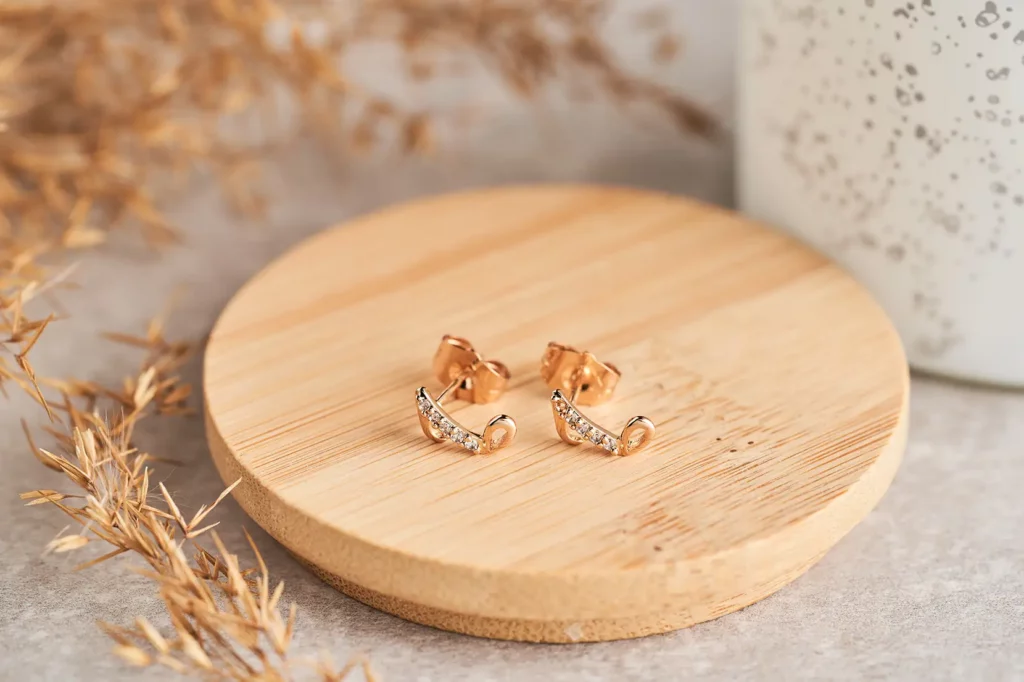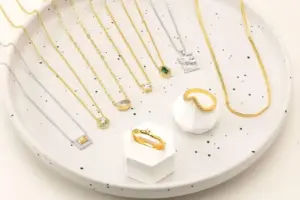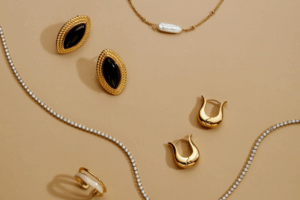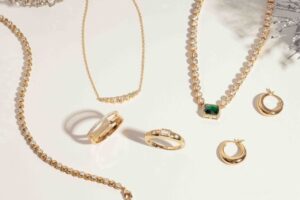Due to its resemblance to gold, brass has been used as a metal for making jewellery since time immemorial. Brass is a zinc and copper alloy (a metal formed by combining two or more metallic elements).
Aside from its beauty and low cost, brass is also very easy to clean and maintain, in contrast to other types of metallic jewellery.
It is important to note that while brass bears a resemblance to gold, it is not fake gold.
Rather, it is an alloy made of copper and zinc. If there is more copper, the product takes on a more yellow tone, while more zinc gives it a whiter tone. It is fairly simple to tell whether something is made from brass or gold.
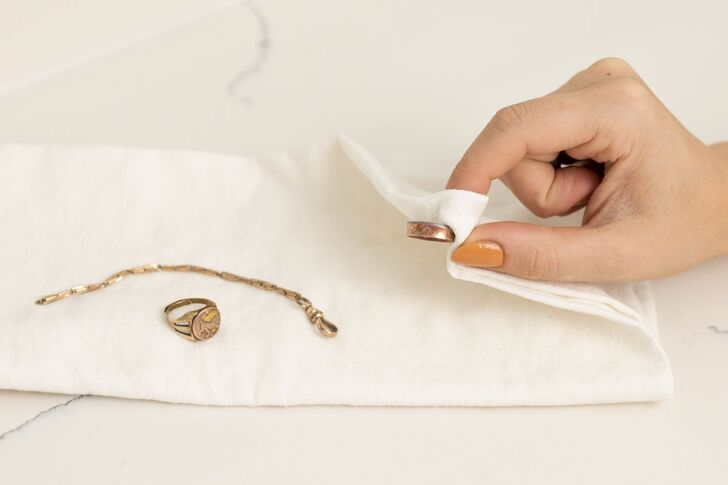
Does Brass Jewellery Tarnish?
Yes, brass jewelry does tarnish over time, especially if not coated. Like most metals, brass reacts with oxygen in the air, causing surface discoloration and a gradual loss of shine.
Tarnishing refers to the surface discoloration of a metal or a slight loss of its surface finesse. In contrast, when a metal corrodes, it degrades because of environmental reactions, including chemicals, moisture, the atmosphere, acidic or alkaline solutions, and other substances.
Tarnishing is essentially the surface corrosion of metals that results in a loss of shine and brilliance.
When copper-based materials tarnish, a thin, dull, grey, or black coating is formed, referred to as “patina.” Therefore, it is true to say that patina is the term used to describe tarnish on materials made of copper.
Another factor that accelerates the tarnishing process of brass jewellery is the coating of oil and dead skin cells that the skin leaves on the surface of the jewellery.
Fortunately, the process of tarnishing is self-limiting and, more importantly, one that is reversible. Continue reading to learn how to restore the shine and brilliance of your tarnished brass jewellery. You can also explore our detailed guide on what types of jewelry is tarnish free.
So, Is Brass Jewelry Good?
Yes, brass jewelry with proper plating and handling is a great choice for many reasons. It is affordable, durable, and aesthetically versatile, offering a warm, golden tone that delivers a luxurious look at a fraction of the cost of gold. While brass can tarnish over time, our pieces are coated with two layers of silver and an e-coating, making them longer-lasting and more resistant to tarnish. Many well-known brands, including Gorjana and Kendra Scott, also use brass as their base metal for their jewelry collection.
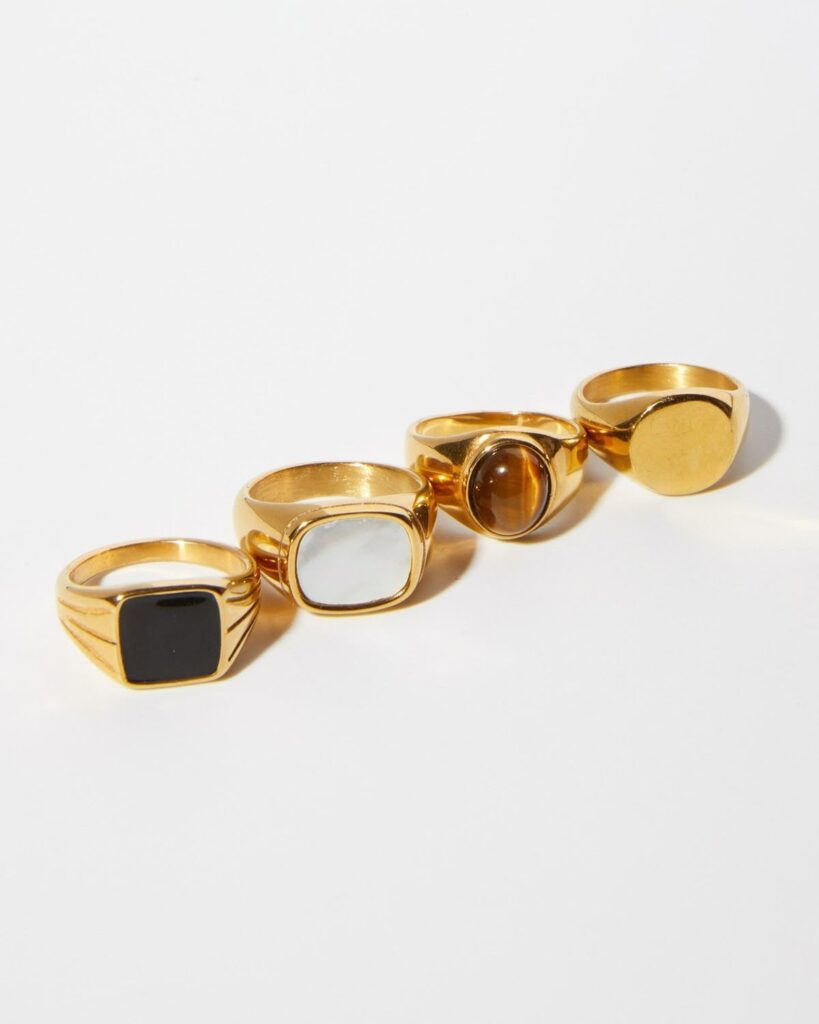
How Long Does Brass Jewellery Last?
How long can brass jewelry last varies. With proper handling and thick plating, brass jewellery can last up to years. However, occasional cleaning is required to maintain its brilliance. The time it takes for brass jewellery to tarnish varies depending on how frequently it is worn, how well it is maintained, and environmental factors.
Jewellery is more susceptible to body oils, dirt, and oxygen in the air when worn frequently—all of these quicken the rate at which the tarnishing process occurs.
Fortunately, only the jewellery’s surface is harmed by the patina that results from brass tarnishing. This means that you can revive the sparkle of your jewellery with proper cleaning.
There is another process that brass products go through, known as the dezincification of brass. This is a process of corrosion in which zinc is lost and copper is left behind. However, it takes place over a very long period of time.
It takes place gradually, and before seeing your jewellery dezincify, you probably have already changed it.
How To Stop Brass Jewellery From Tarnishing?
The best way to stop brass jewellery from tarnishing is to limit its exposure to oxygen, moisture, and skin contact. Tarnish forms when brass reacts with air, water, sweat, and oils, so reducing these triggers helps preserve its shine.
Common Causes of Tarnish
- Body oils, lotions, and sweat – Jewellery can also become tarnished by body lotion, body oil, sweat, and dead skin cells. This is because these substances tend to deposit on the jewellery causing it to become tarnished.
- Oxygen and moisture – The primary agent responsible for corrosion in metals is oxygen. Oxygen is a major component of the water (in its dissolved form) and air surrounding us. Oxygen reacts with the metals in the jewellery to form oxides, forming a patina that darkens the surface of the jewellery and removes its lustre.
Practical Tips to Stop Jewelry From Tarnish
- Avoid exposure to water: To reduce the rate of oxidation of the metallic components of your jewellery, it is wise to keep it away from moisture.
- Avoid undue exposure to lotion, sweat, and perfume as much as possible: All of the aforementioned can tarnish jewellery, so it is best to avoid wearing jewellery when they are present. For example, if you plan on working out or tanning, it is best to avoid wearing jewellery to prevent sweat and lotion from depositing on the jewellery and causing tarnishing.
- Apply clear nail polish: Before wearing jewellery, you can apply a thin coat of clear nail polish to your skin. This layer of nail polish between the skin and the jewellery acts as a screen, preventing sweat from being deposited on the surface of the jewellery. This, in turn, slows down the tarnishing process.
- Store jewellery properly: When not in use, jewellery needs to be properly stored in an airtight jewellery bag. Make sure to remove all of the air from the bag before putting your jewellery inside, and then store it somewhere cool and dry.
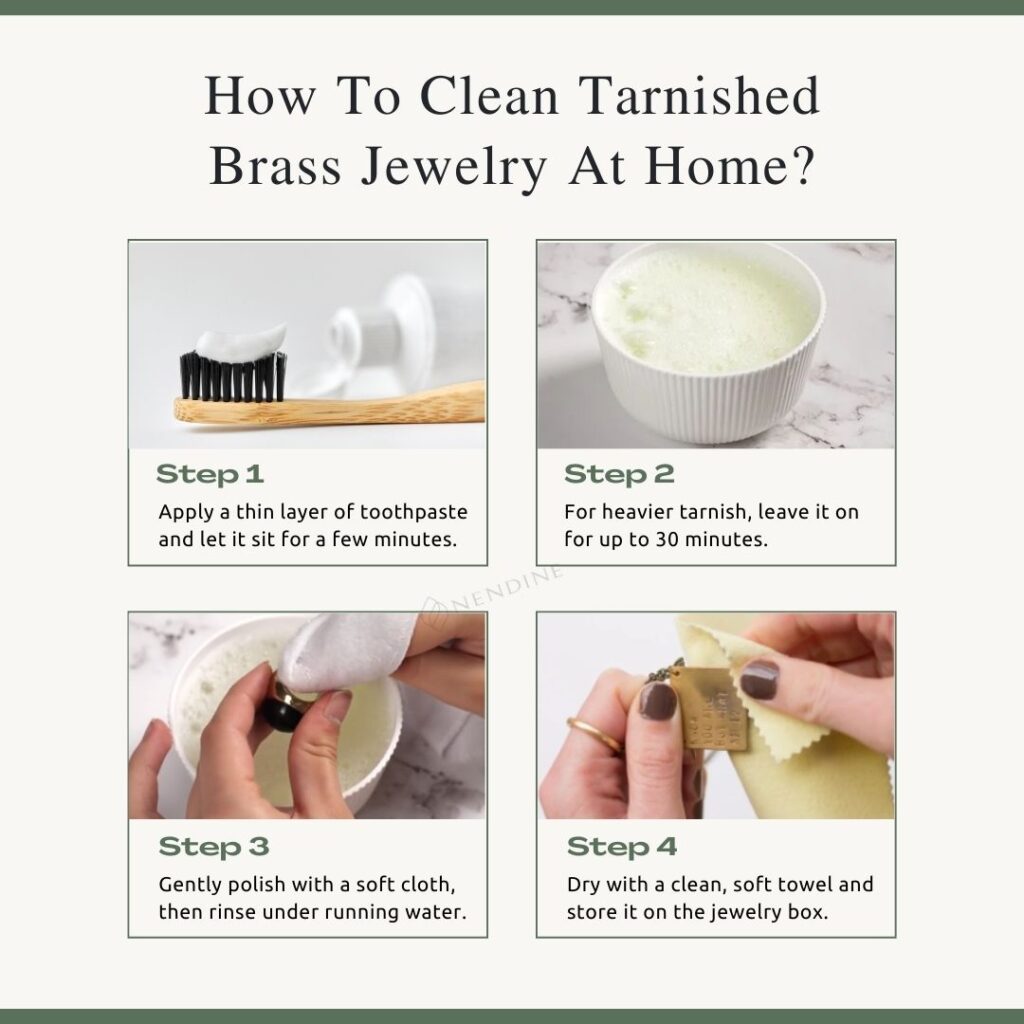
How To Clean And Polish Tarnished Brass Jewelry At Home?
Brass jewellery, like other types of jewellery, tarnishes with time. Brass tarnishes when a layer of patina forms on its surface. It is critical for people who wear jewellery frequently to know how to remove tarnish from their jewellery; otherwise, they may end up spending a lot of money on new jewellery or losing interest in jewellery altogether.
There are several proven methods regarding how to clean and polish tarnished brass jewellery and a few of them are discussed below:
Method #1: Apply Toothpaste
One of the easiest home remedies is plain, white (non-gel) toothpaste. Its mild abrasiveness helps remove tarnish effectively.
How to use:
Step 1: Apply a thin layer of toothpaste to the jewelry and let it sit for a few minutes.
Step 2: For heavier tarnish, leave it on for up to 30 minutes.
Step 3: Gently polish with a soft cloth, then rinse thoroughly under running water.
Step 4: Dry with a clean, soft towel.
⚠️ Note: Toothpaste is mildly abrasive, so use this method occasionally to avoid surface scratches.
Method #2: Apply Ketchup
It may sound surprising, but ketchup works well thanks to the natural acids it contains, which break down tarnish.
How to use:
Step 1: Wash the brass jewelry first with soap and water.
Step 2: Cover it completely with ketchup.
Step 3: Let it sit for 15 minutes to 2 hours, depending on how tarnished it is.
Step 4: Rinse thoroughly with warm, soapy water, then dry with a soft cloth.
⚠️ Note: If your brass jewelry has a lacquer coating, you’ll need to remove the lacquer before cleaning, as ketchup won’t penetrate it.
Method #3: Apply Lemon Juice and Baking Soda
The combination of lemon’s natural acidity and baking soda’s abrasiveness makes this an excellent cleaning solution.
How to use:
Step 1: Squeeze half a lemon into a small bowl.
Step 2: Add 3–4 teaspoons of baking soda to form a bubbly paste.
Step 3: Apply with a toothbrush and scrub gently.
Step 4: Rinse thoroughly, ensuring all residue is removed, then dry with a soft cloth.
Method #4: Apply Lemon Juice and Salt
This method uses the same principle but with salt as the abrasive element.
How to use:
Step 1: Cut a lemon in half, sprinkle a thin layer of salt on a small plate and dip the cut side into salt.
Step 2: Rub the salted lemon directly over the brass jewelry surface.
Step 3: For hard-to-reach areas, make a paste by mixing lemon juice and salt, then apply with a soft brush.
Step 4: Rinse thoroughly with warm water and pat dry.
Can You Wear Brass Jewellery Everyday?
Yes, you can wear brass jewellery daily—but it’s generally not recommended.
Frequent wear can speed up tarnishing and, in some cases, cause your skin to turn green or trigger mild allergic reactions. This is why many people wonder: does brass jewelry turn skin green? The answer is that it sometimes can, depending on your skin’s sensitivity and how well the jewellery is maintained.
Nevertheless, putting a layer of clear nail polish between the jewellery and the skin reduces the chances of getting green skin.
Not everyone is allergic to metals; in fact, most people aren’t, and if you can keep your brass jewellery clean and polished, nothing is stopping you from wearing it every day.
Key Takeaway
Brass is an excellent material for making jewellery for a variety of reasons, including its resemblance to gold, resistance to corrosion, ease of cleaning and polishing, low cost, durability, and low maintenance. It is our sincere hope that after reading this piece, you are able to maintain and clean your brass jewellery more easily to get the best out of your beloved possession.
